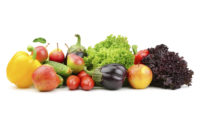The latest Total Consumer Report from Nielsen, Chicago, shows that fresh categories within the United States are driving nearly 49% of all dollar growth across the fast-moving consumer goods (FMCG) brick-and-mortar landscape. In fact, within the last year, fresh and perishable foods generated more than $177 billion in sales.
“I learned the importance of fresh firsthand while working in retail. Fresh plays a crucial role in driving consumer traffic and loyalty,” says John Tavolieri, president of U.S. FMCG and retail and chief technology and operations officer. “To win shoppers over, fresh has to be integral to a broader, more connected total store approach that goes beyond category management. With a total food view, marketers can capitalize on adjacencies, reveal unseen competition and make cross-category connections to uncover business blind spots, enabling the ability to better meet the demands of today’s highly selective and savvy consumers who are looking to lead healthier lives.”
Here are some highlights from the report:
- E-commerce is still maturing within food and beverage, but fresh perishables are an opportunity in stores today. One year after the merging of Amazon and Whole Foods, e-commerce within grocery continues to grow, but is still maturating. In the past year, online food and beverage sales represented 13% of the overall dollar volume seen online. While e-commerce will be a bright opportunity for the future, marketers looking for growth opportunities today shouldn’t be blind to the opportunities living in the perimeter of the store. Fresh and perishable foods generated sales nearly 14 times as high as all online food and beverage sales this year.
- On-the-go fresh produce fails to keep pace with clean snacking. Although Americans would rank eating more fruits and vegetables as the top factor for healthy eating, they’re not flocking to on-the-go fresh produce offerings as much as they are to other snack options. On-the-go fresh produce—pre-cut produce that has been portioned intentionally for snacking purposes—declined by nearly 2% in dollars and 6% in unit volume over the last year. On the flip side, salty snacks are proof that consumers are seeking indulgence in their snacking purchases too, as sales grew nearly $1 billion year-over-year. However, indulgences can still be seen as “clean” to health-conscious consumers. In fact, clean label products represented over one-third (35%) of salty snack dollars in the past year.
- In the battle of burgers, frozen is still winning, but fresh is catching up, while alternative protein growth remains strong. Frozen patties are still the norm in the burger category, as frozen meat-based burgers experienced 2% dollar growth from last year. Looking at growth rates across the store, however, this dynamic may be shifting. Fresh meat burger patties (+8%) and prepared burgers from the deli section (+15%) are both growing and asserting their importance to the future of the category. For marketers within the burger category—growth opportunities are prominent within the alternative protein sector, and this could be a new area of focus to reinvigorate the frozen burger space. Within the past year, sales of alternative-protein burgers are experiencing dollar sales growth of nearly 21%. That said, alternative-protein burgers represent just 6% of the overall burger category. Despite this, frozen alternative-protein burgers grew 17% year-over-year, which highlights an area for potential expansion.



